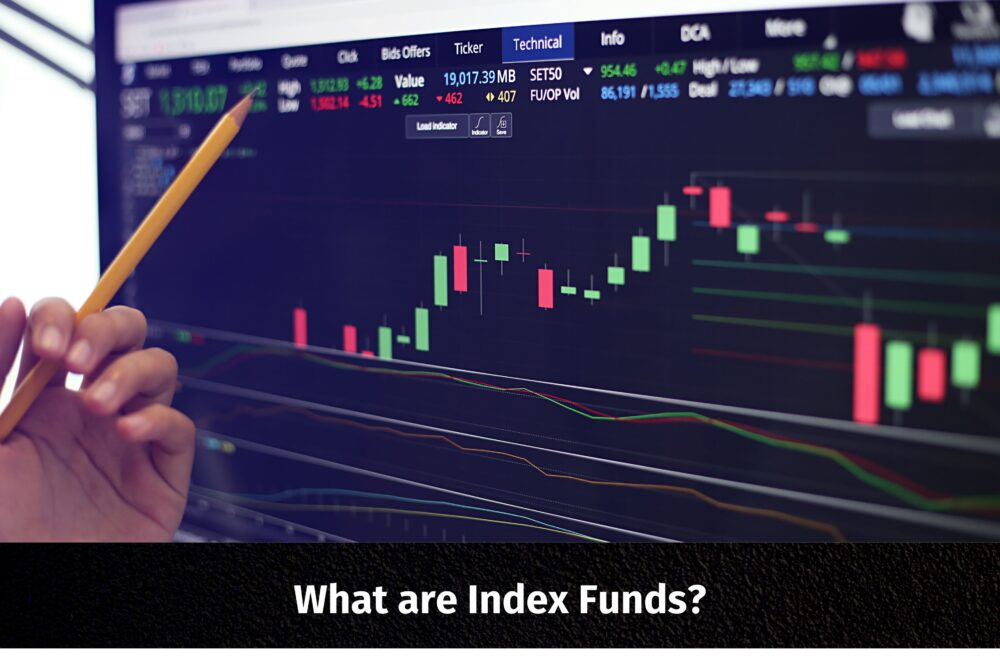Index funds are investment vehicles designed to track the performance of a specific market index, such as the Nifty 50, S&P 500, or Sensex. These funds aim to replicate the returns of an index rather than attempting to outperform it. They offer investors a diversified, low-cost, and passive approach to investing in the stock market.
This article provides a detailed explanation of what are index funds, how they work, their different types, benefits, limitations, and key factors to consider before investing.
How Do Index Funds Work?
Index funds follow a passive investment strategy, meaning they do not rely on active stock picking. Instead, they mirror the composition of a benchmark index.
For example, a Nifty 50 index fund will include stocks of all 50 companies listed in the Nifty 50, in the same proportion as the index. This ensures that the performance of the fund is closely aligned with that of the index it tracks.
Key Components of an Index Fund
- Portfolio Composition: The fund holds all (or most) of the securities present in the index.
- Weight Allocation: Each stock is assigned a weight based on its percentage in the index.
- Rebalancing: If the composition of the index changes, the fund manager adjusts the portfolio accordingly.
- Tracking Error: The slight difference between the index’s performance and the fund’s actual returns.
Types of Index Funds
Index funds can be categorised based on the market index they follow:
1. Broad Market Index Funds
These funds track a broad stock market index representing various industries and sectors. Examples include:
- Nifty 50 Index Fund
- Sensex Index Fund
- S&P 500 Index Fund
2. Sector-Specific Index Funds
Sector-based index funds focus on a particular industry, such as banking, IT, or healthcare. Examples include:
- Nifty Bank Index Fund
- Nasdaq-100 Index Fund (focused on technology stocks)
3. Bond Index Funds
Bond index funds track a fixed-income index, investing in government or corporate bonds. Examples include:
- Nifty PSU Bond Plus SDL Index Fund
- Bloomberg Barclays U.S. Aggregate Bond Index Fund
4. International Index Funds
These funds track stock indices from global markets, offering geographical diversification. Examples include:
- MSCI Emerging Markets Index Fund
- S&P 500 Index Fund (for non-U.S. investors)
5. ESG Index Funds
ESG (Environmental, Social, and Governance) index funds invest in companies that meet specific sustainability and ethical standards. Examples include:
- Nifty ESG 100 Index Fund
- MSCI ESG Leaders Index Fund
Advantages of Index Funds
1. Low Expense Ratios
Since index funds do not require active management, they have lower administrative and operational costs compared to actively managed funds.
2. Diversification
Investing in an index fund provides exposure to a wide range of stocks, reducing the risk associated with individual stock performance.
3. Transparency
Investors always know which stocks are in the fund since they follow a publicly available index.
4. Tax Efficiency
Due to lower portfolio turnover, capital gains tax liabilities in index funds are generally lower than actively managed funds.
5. Long-Term Growth Potential
While actively managed funds may outperform the market in some years, index funds tend to generate stable returns over the long run.
Limitations of Index Funds
1. No Market Outperformance
Index funds are designed to match market returns, not beat them. Investors looking for high returns through active stock selection may find them limiting.
2. Market Risk
Since index funds mirror the market, they are subject to economic downturns and stock market volatility.
3. Tracking Error
Minor differences between an index fund’s returns and the actual index performance can occur due to fund expenses and rebalancing delays.
4. Lack of Flexibility
Fund managers cannot make strategic adjustments based on market conditions, unlike actively managed funds.
Key Considerations Before Investing in Index Funds
1. Expense Ratio
The expense ratio represents the annual fee charged by the fund. Lower expense ratios enhance long-term returns.
2. Tracking Error
Funds with low tracking errors replicate the index more accurately.
3. Investment Horizon
Index funds work best for long-term investors aiming for steady capital appreciation.
4. Choice of Index
Investors should select a benchmark index that aligns with their financial goals, such as:
- Nifty 50 (Large-cap exposure)
- Nifty Next 50 (Mid-cap exposure)
- S&P 500 (U.S. equity exposure)
5. Tax Implications
Capital gains in index funds are taxed based on the holding period:
- Short-Term Capital Gains (STCG): Taxed at 15% if held for less than one year.
- Long-Term Capital Gains (LTCG): Gains above ₹1 lakh are taxed at 10%.
How to Invest in Index Funds?
Investors can invest in index funds through various methods:
1. Direct Investment via Mutual Fund Companies
Investors can purchase index funds directly from asset management companies (AMCs).
2. Investment via Brokers
Many online brokerage platforms allow investors to buy and sell index fund units.
3. Systematic Investment Plan (SIP)
A SIP allows investors to invest small amounts periodically, reducing the impact of market volatility.
4. Exchange-Traded Funds (ETFs)
ETFs are index funds that trade like stocks on stock exchanges. They provide intraday liquidity and have lower expense ratios than mutual funds.
Conclusion
What are Index Funds? Index funds are passive investment vehicles that track market indices, offering diversification, lower costs, and long-term growth potential. They are suitable for investors seeking market-based returns with minimal effort.
Understanding the different types of index funds, their benefits, and limitations helps investors make informed decisions. Choosing the right index, minimising expense ratios, and aligning investments with financial goals are key factors for successful investing in index funds.








